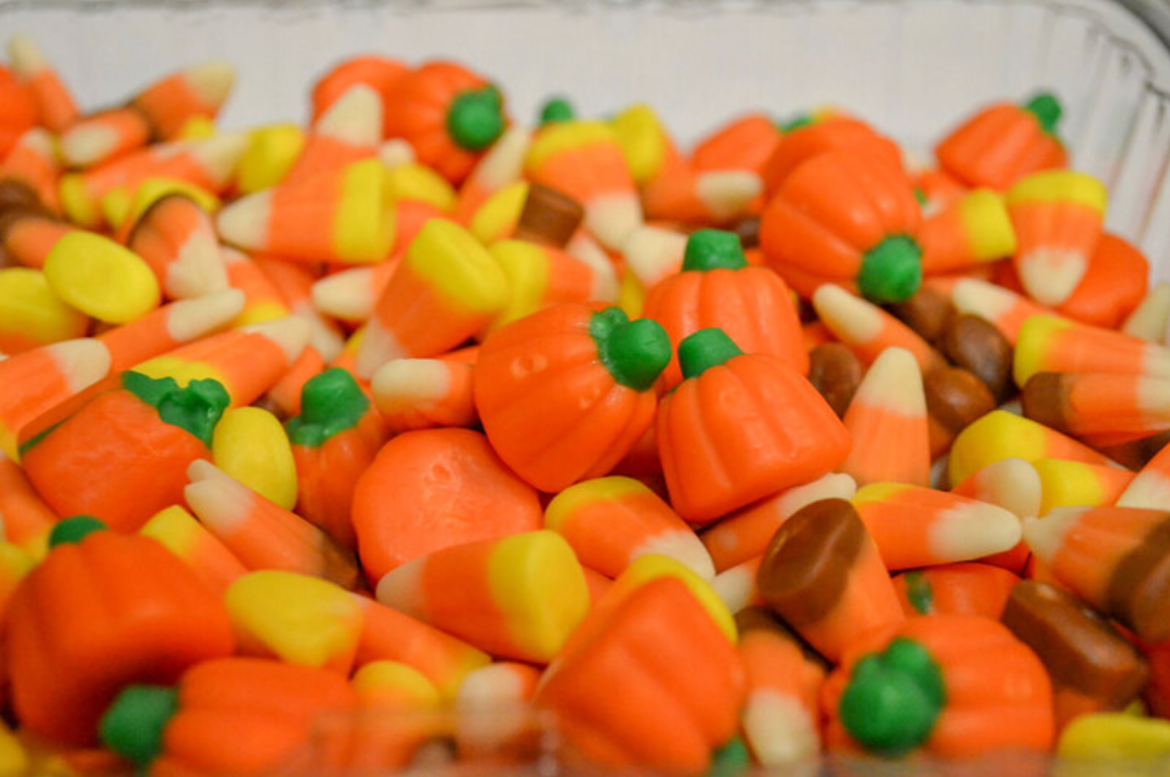
For many, Oct. 31 is a time to delight in the classic indulgence in Halloween candy. But while these treats can be immediately rewarding, it is also important to recognize the nutritional and psychological implications of the holiday centered around an overload of sweets.
Unlike some headlines might suggest, the connotations of candy consumption are not entirely negative, according to Prof. Laura Bellows, nutritional sciences. But as the popular publications propose, candy consumption also does not have many beneficial health outcomes.
“Candy is high in sugar and high in fat. All candy is pretty much empty calories,” Bellow said. “What that means is that they contribute to your overall calorie count, but there’s no nutrients in them.”
Sugar intake can also have behavioral implications, which can cause what Bellows called a “spike” in energy or insulin, more colloquially known as the “sugar high.”
This energy increase occurs when the sugary stimulus — the hard candy, gummy worm, chocolate or any other typical Halloween treat — is ingested and one’s blood glucose level, also known as blood sugar, rises.
Many biologists then suggest that the beta cells of the pancreas, or the cells responsible for maintaining homeostasis, are activated by this increase, causing them to secrete insulin and allow the glucose to enter body cells and lower blood sugar.
Leaderboard 2
This excess of glucose within the body, incited by the large amounts of candy intake, may factor into why so many trick-or-treaters appear so lively and full of energy.
This spike and lack of nutritional value does not imply extremely adverse health effects caused by candy consumption. While an excessive amount of empty calories as a pattern in one’s diet tends to correlate with more overweight individuals, Bellows suggested that this is not to indicate that all individuals who eat candy on Halloween experience the effects the same.
“It’s just individual differences of how we metabolize things,” Bellows said. In other words, candy consumers differ in their ability to process sugar and act on a potential energy increase.
Newsletter Signup
What is more beneficial to focus on, then, is the things individuals can control: the pre-Halloween diet preparation and the post-Halloween routine.
Bellows mentioned that the impact of candy on the human body and mind depends on the pattern of eating beforehand. If an individual ate a good dinner, which involves some sort of grain, protein and fruit/vegetable combination, before the period of trick-or-treating, they will have substance in their stomachs, thereby mitigating the effects of sugar and decreasing the probability of a temporary energy spike.
This is because if an individual does not eat anything, the main substance in their stomach will be candy, making them more susceptible to energy increases and post-candy lethargy. It is most beneficial to consume a nutritious meal before partaking in Halloween activities in an effort to limit the potential unfavorable effects of sugar.
In addition to this nutritional component of the holiday, another important consideration is the psychological aspect, specifically focusing on the value that trick-or-treaters place on the candy and Halloween in general.
“It’s the fun and the enjoyment [of Halloween],” Bellows said. “I don’t think we can take the social part away. I think it really comes down to: how do you manage that post trick-or-treating candy consumption?”
From a nutritional perspective, Bellow believes that it is most beneficial to set boundaries and distinct patterns of candy intake. After Halloween, candy consumers can limit their intake to a piece of candy every day at the same time, thereby providing them with the boundary and simultaneously giving them a choice on where their candy goes and how they are able to interact with it.
This structured diet approach is beneficial for sweet eaters of all ages, particularly children, as Bellows noted it helps create a behavioral schedule of when it is acceptable to eat foods high in sugar. This can then lead to neural changes, as the repeated use of the same neural pathways strengthens the synapses dedicated to that action, a process called long term potentiation. This means that repeated intake of candy at the same time every day promotes behavioral patterns and neurological synapse strengthening to continue this understanding and schedule of candy intake with ease.
From a behaviorist perspective, this moderation is ideal. Bellows said she often observed that individuals, especially children, are more likely to over-indulge and be unable to self-regulate when they are restricted from eating what they wish. By building the candy into the everyday diet in a healthy way, people are able to begin to psychologically comprehend the pattern of candy intake without experiencing negative biological effects.
To define what exactly this “healthy way” is, it likely involves eliminating another aspect of sugar. With American diets continuing to transform to higher and higher levels of sugar intake, it is extremely important, if candy is implemented into daily patterns, to begin eliminating other snacks high in sugar (like gummies or cookies, for instance), desserts, certain cereals, etc. that are part of an everyday diet, but should not necessarily be supplemented with more sugar from Halloween treats.
Candy is not necessarily detrimental and there is no need to facilitate parent guilt or serious children repercussions for wishing to allow Halloween to be typical Halloween. Fom both a psychological and a nutritional standpoint, it is most important to let kids be kids, especially if the candy is portioned out and given in moderation, thereby also facilitating an aspect of future self-control and healthy pattern amid this immediate sweet joy.
Ava Malkin can be reached at [email protected].
